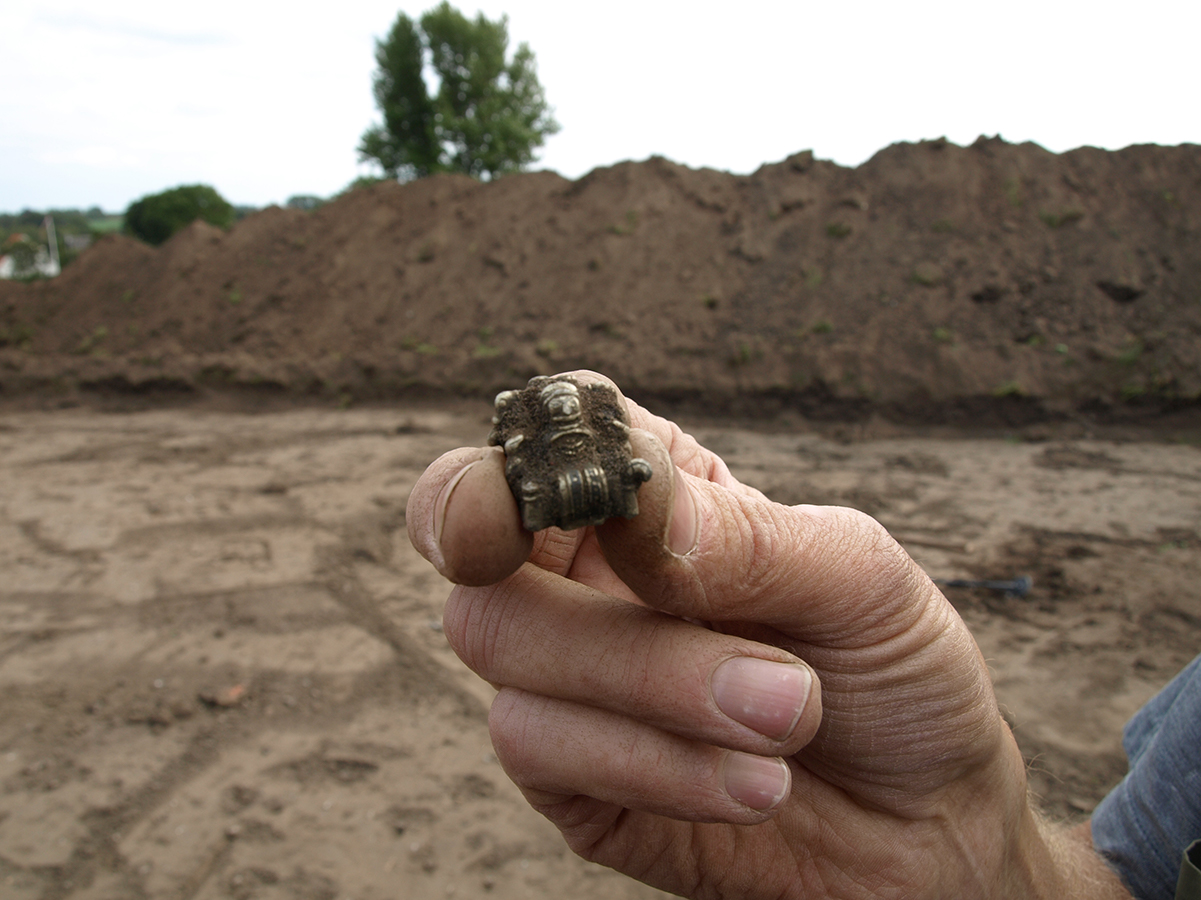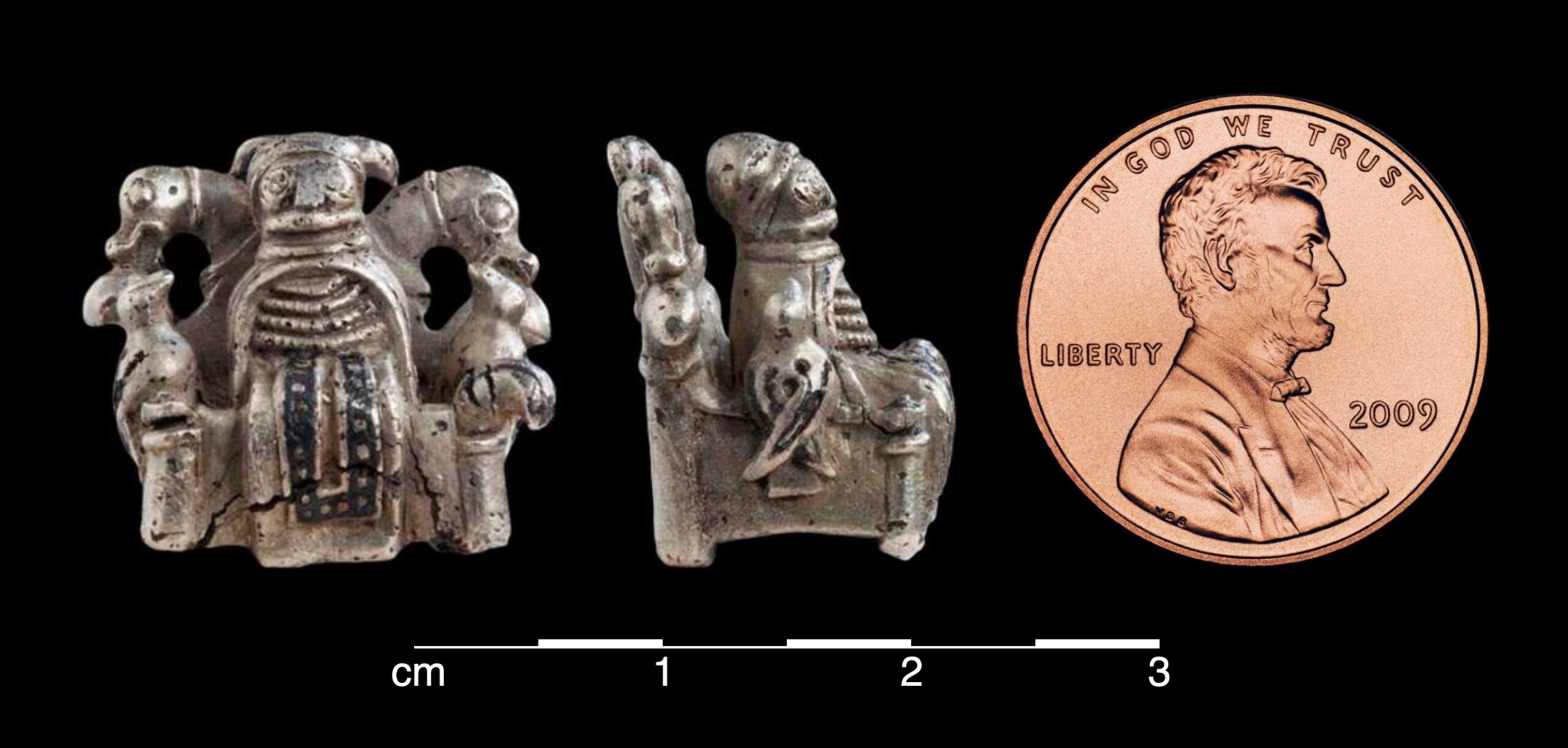The object most commonly known as Odin from Lejre is quite small: its total weight is a mere nine grams; its height, width and depth are all less than two centimeters. But from the minute it was uncovered in 2009 during the excavation of the Lejre settlement in Denmark, it has drawn considerable attention. The immediate interest of Viking Age scholars in this find is due in part to its incredible detailing; the Lejre figure is not only made of fine materials—silver plating and a niello interior—but making the object would have required the work of a skilled craftsperson.

The Lejre Figure
as initially found.
(source: ROMU)
Since the Lejre figure was uncovered, Viking Age scholars have been divided over who exactly the figure sitting in the chair is supposed to depict. While we cannot promise one answer to this mystery of the Viking Age, plenty of theories are to come – as well as the tools to come to a conclusion of your own. More importantly, a find whose interpretation has been hotly debated lends to conducting analysis using a variety of sources. To begin to understand all of the different elements of the Lejre figure, we will look at a range of artifacts and make comparisons with the evidence that exists for each.

Lejre Figure (H 1.75 cm) and US Penny (D 1.91 cm).
(source: Christensen and US Mint)
A little context can be useful before jumping into close-looking. Interested in learning more about where the artifact was unearthed? Keep reading!
« Previous | Home | Next »